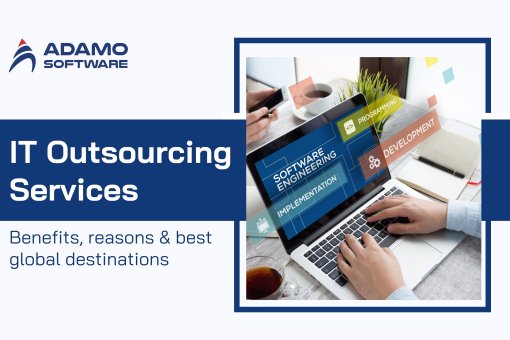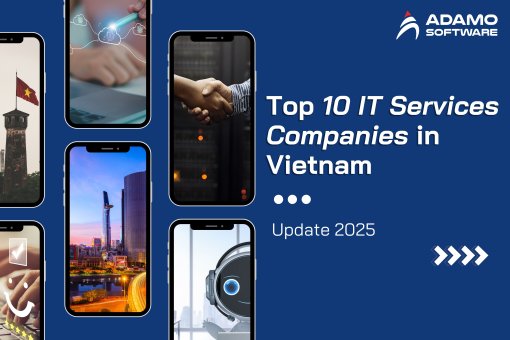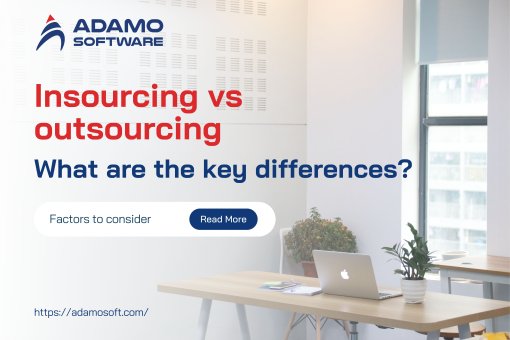Classroom software: How Google classroom operating system changed the game

While many education exercises going online, classroom software becomes an indispensable part of the education industry, which speeds up the digitalization process.
From the early 2010s, distance learning has rapidly grown, attracting many student generations due to its advantages in flexibility and economy. In fact, instead of studying abroad, learners could decide to join online courses with a similar syllabus with a more affordable tuition fee. Currently, most online courses provide certificates authorized by educational institution0s that have the same value as official degrees.
However, there still have considerations regarding the quality of those online courses. Objectors explained that studying online lacked interaction between instructors and learners, which reduces the enthusiasm in learning. Fortunately, with the technological innovation in classroom software, those challenges could be solved. Indeed, the combination of networked computers, live interaction technology, cloud computing, and more, classroom software brings digital learning closing up to traditional activities.
Classroom software in the context of education software development
Along with the rapid growth across software development, education software solution tends to be a preferred field to concentrate. Evidently, teachers could leverage E-learning Portals to optimize their resource of searching and storing information. Besides, they could handily find assistant tools for grading and commenting on student works, including reference browsing applications, online classroom software, or online grade book to better performance.
Online classrooms enable schools and colleges to tackle the challenges of physical campus and classroom. Currently, online classrooms or virtual classrooms have become a new standard in the education industry. Accordingly, it could be a driven factor, which contributes to changing the mindset for executing educational activities.
The innovation of classroom software
On the positive side, the global pandemic forced most schools and colleges to perform fully online. It means they temporarily cause disruption in on-campus lectures. Instead of study-concentration in physical classes, students have to study in a digital learning platform or online conference. From the beginning time, it was a golden opportunity for online conferencing services providers, including Zoom, Skype, or Google Classroom operating system.
Recognizing the lucrative potential of classroom software, several new entrances started their strategies, focusing on offering similar services locally. In fact, you can see significant differentiation about classroom software across countries. Besides, instead of limitations in virtual classroom apps, you could recently find lots of classroom software solutions serving varied purposes.
_ Serving instructors’ purpose: student monitoring is one of the representative tools within classroom software. By using student monitoring software, teachers could handily track the student progresses. These days, with real-time technology, instructors could timely detect any issues from student learning reports. From tackling traditional curriculum, instructors are leverage multimedia tools in classroom software to replace conventional whiteboard lectures. Whereby, classroom software supports several types of curriculums from visual items, audio to more interactive forms, like quizzes, gamification, etc. It adds more excitement to classes, which promotes student enthusiasm.
_ Serving student’s purposes: in the past, instant messaging or forum tools were preferred by students, for having a conversation with other classmates. Currently, teleconferencing tends to be the norm that students could approach lectures via webcam or video-based technology. Accordingly, it turns remote study or study from home becoming more accessible and realistic. Online classroom software for students can be web chats, online forums, online assignment submission boxes, online timetables, etc.
Classroom software is seemingly catching the reform due to the booming demand for distance learning these days. It requires development and innovation in booth teaching metrologies and assistant technology.
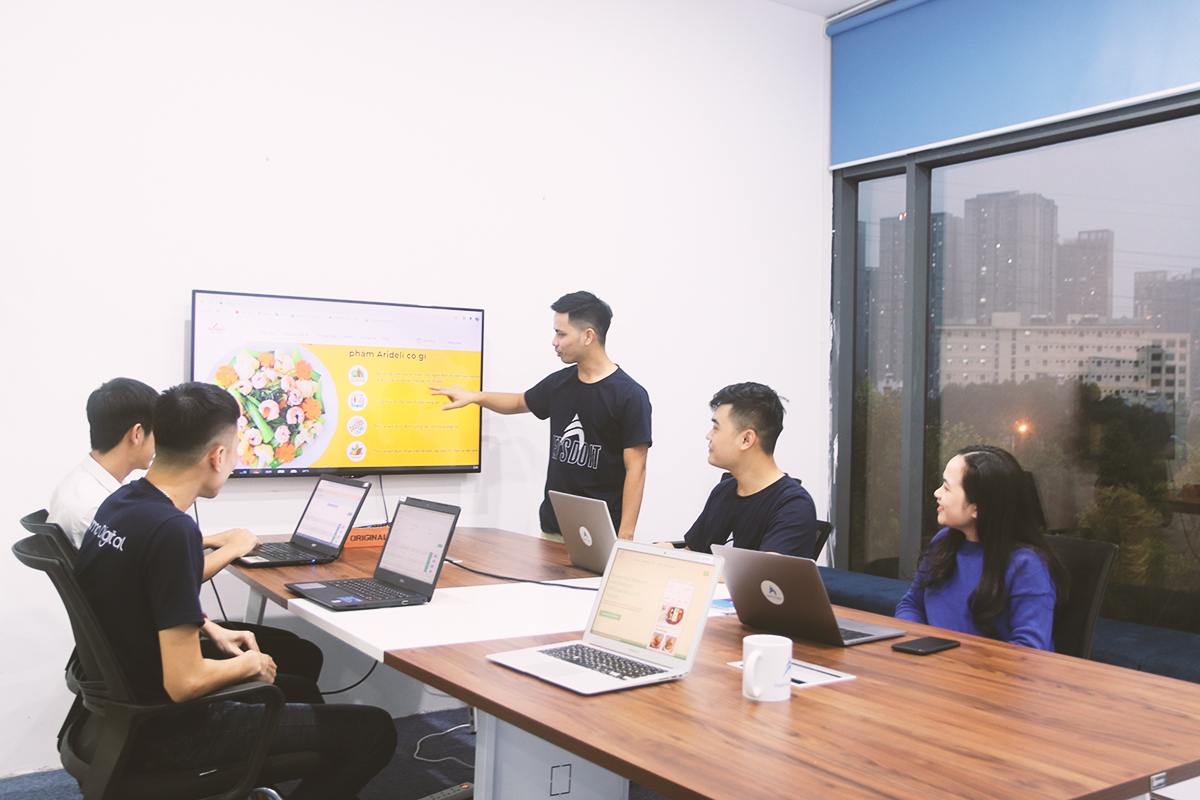
How classroom software accelerates digital transformation in education
The presence of classroom software tends to push up the level of digital transformation in training and learning. Technology advancements are gradually replacing many parts of the education industry. Researching as an example, leveraging reference applications and academic resource APIs integrated into online classroom software, students and teachers could speed up the research process.
In cases of student assessment and testing, classroom software draws a more comprehensive picture of each student. Accordingly, it tackles bias when assessing traditionally. In the past, covering dozens of students at the same time apparently caused prejudice for teachers.
They currently use assessment tools integrated into classroom software to track all student performance simultaneously with high accuracy. Also, online grade book tools could also replace paper grade books that teachers could add and extract data automatically. Accordingly, it reduces the time spending on documenting tasks.
Additionally, classroom software also performs as a bridge connecting parents and schools. They could better collaborate in keeping an eye on students. In the future, school management software solutions are expected to reduce human execution in some administrative activities, which adds more digitalization in education and training.
Popular forms of classroom software
Rather than a single software development tool, classroom software consists of a group of software development solutions supporting online learning. Accordingly, it hosts a virtual space, which simulates a physical classroom. In which students have an accessible room to interact with teachers, classmates, and lecture content. Among diverse types of classroom software, we introduce you to three popular ones, which currently hold the spotlight in the education software development sector.
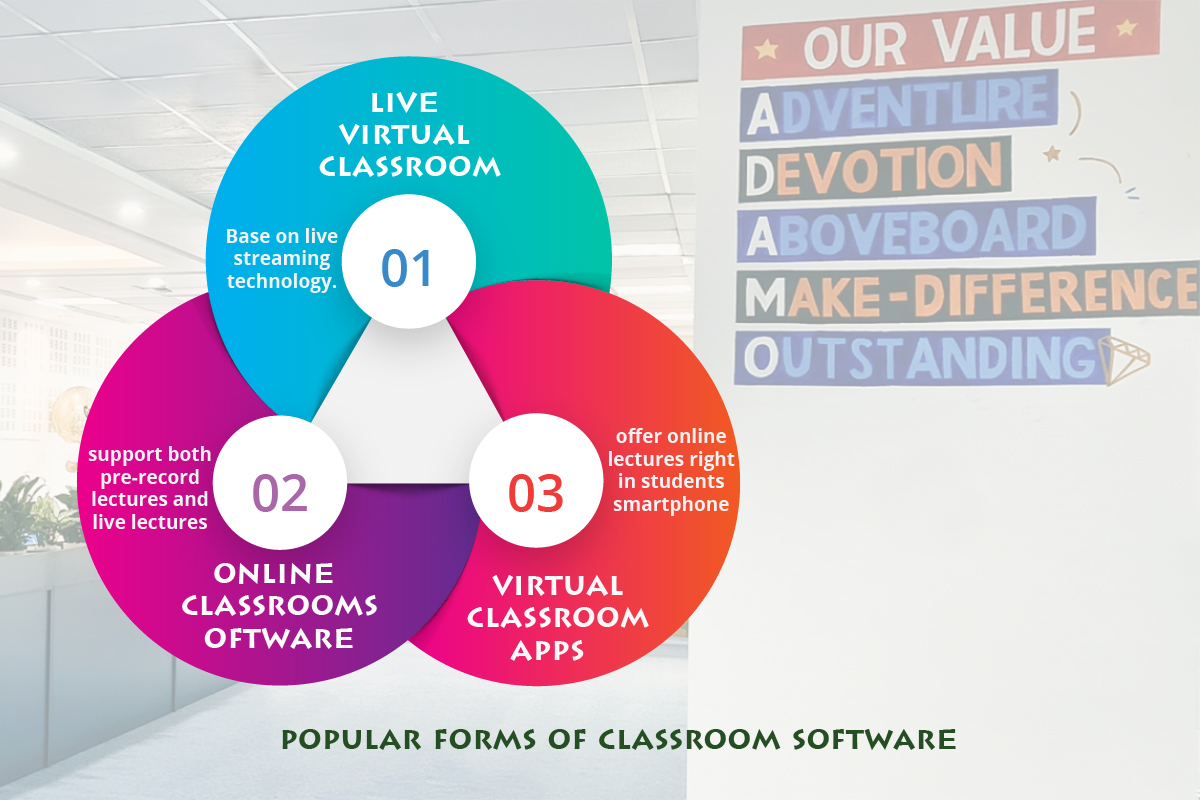
Live virtual classroom
Live virtual classroom builds online learning environment mainly based on live streaming technology. This type of classroom software follows the face-to-face instruction of a physical classroom. It offers real-time interaction similar to the physical class. In fact, live virtual classroom tries to perform online lecture closely to traditional classes.
A live virtual classroom could be integrated with a learning management system and assessment system, support teachers in controlling the performance of their lectures.
Online classroom software
Having some adjustment in feature with live virtual classroom, online classroom software support both pre-record lectures and live lectures. Instead of following a rigid timetable of live classes, students could create their own schedules based on their needs. In exchange, learning with pre-recorded lectures would come up with less interaction than the live virtual classroom. Besides, online classroom software would have a high level of infrastructure requirement, that it needs a more complex database for lecture storing and extracting.
Virtual classroom apps
Similar to online classroom software, virtual classroom apps offer online lectures right on student smartphones. Taking advantage of the domination of smartphones in human life, using virtual classroom apps might raise the flexibility and mobility to study activities. With support from other apps like instant note-taking, screen recording, screen sharing, mobile controlling, and more, virtual classroom apps could be more popular to students for anywhere learning.
How Google classroom software influence the innovation in classroom software
The dominant of Google classroom is undeniable. Along with the popular or Google ecosystem, the introduction of Google classroom software strengthening this giant’s power in the technology world. In fact, as a software development company, Google was not ubiquitous in many countries, especially South Korea and China.
Everything has changed when Google presenting its first Chromebook in 2011, which was relatively cheaper than other devices in the same class. The intelligent pricing strategies plus Google reputation made this model close to students, its target audience. Currently, Chromebooks take a large portion of the educational device market share.
Google Classroom software was initially launched in 2014. It was firstly attached with Chromebook as a pair software for this model, then rapidly applying broadly in multi-internet devices. Apparently, Chromebook and Google Classroom software are the perfect couple for educational purposes.
As an Edutech leader, Google classroom operating system has added adjustment in the education and training industry development. Accordingly, it presents 5 significant improvements as below:
_ New standard in app development design: According to Google market research in Google classroom’s early period, learners had a high incentive to use mobile phones in assignment writing instead of laptops. Hence, the concept of mobile-friendly has kept as Google cove value of its web-based application design.
_ Advancement in Assignment and writing execution: To redefined the classroom software assistant for assignment, Google presented a tailored assignment solution being used to individuals or groups. Integrated into Google classroom operation system, personalize assignments allow instructors to allocate resources differently to each group. Hence, students could not be information overload.
_ Google classroom features for teachers in delivering their lectures: Google Classroom supports better collaboration that allows cross commenting among teachers. It means that other instructors could participate in regular check asynchronous curriculum. Besides, teachers also have tools to deliver custom instruction for their students, including differentiating classwork or assignment.
_ Digital grading tool by Google classroom is one of the powerful parts, synchronizing with the whole system to real-time update feedback to the learner. Instead of monotonic grading, students can see how well they could improve in learning progress. Besides, with commenting tools, the grade book could become a discussion topic that teachers and students express their idea.
_ Tracking and data analysis: Google classroom visualize the learning objective of each student by analyzing learning history from assessments, attendance, or grading. By having some simple steps, teachers could automatically generate student progress reports being ready to export.
In conclusion, classroom software has changed the way schools, students, and instructors perform their own work. It is an effective digital tool disrupting the whole education industry. Adamo Software, the leading software development company in Vietnam see that live virtual classroom or class management software expectedly dominate the market, turning learning activities into the next level of advancement.






